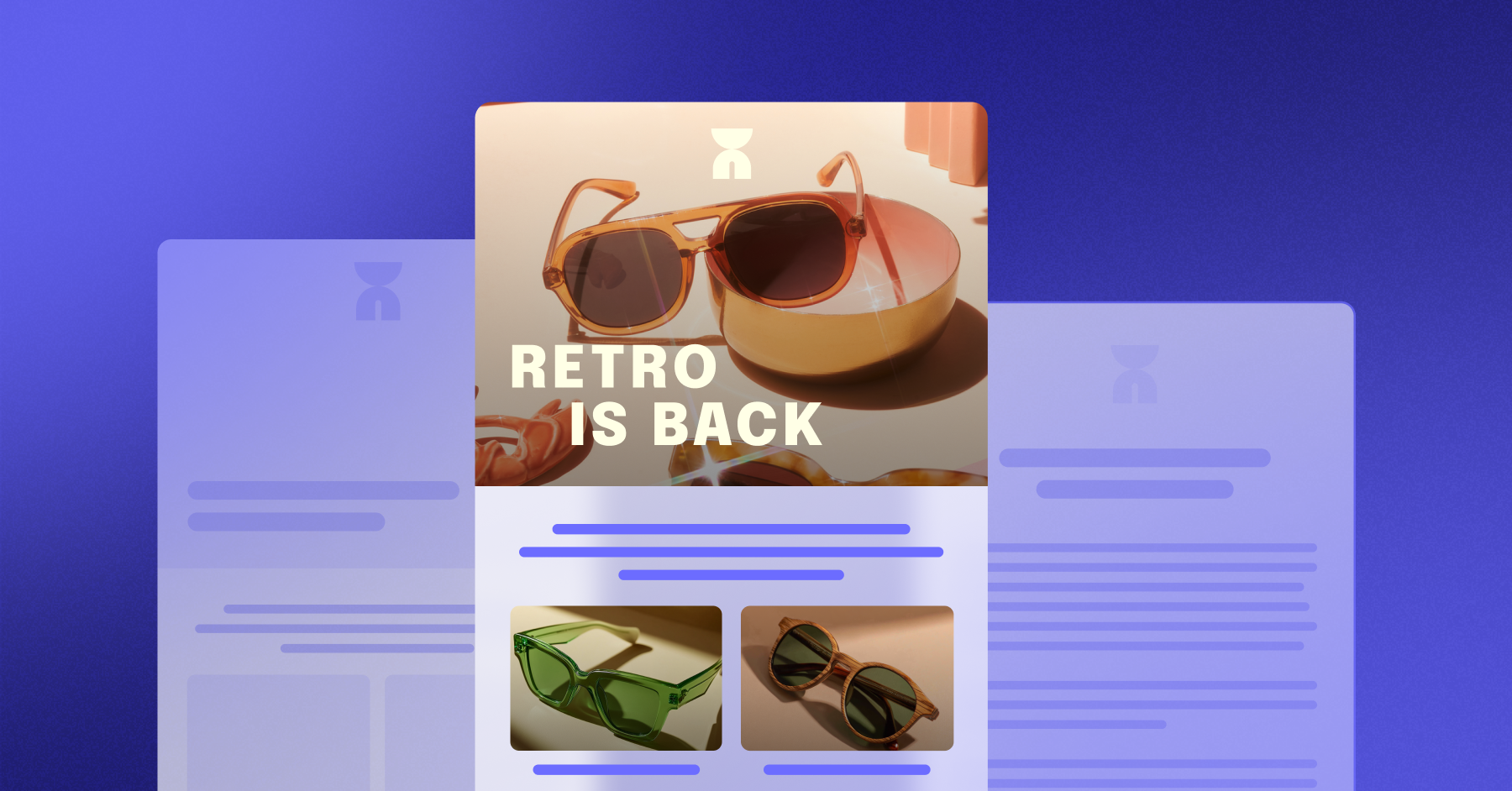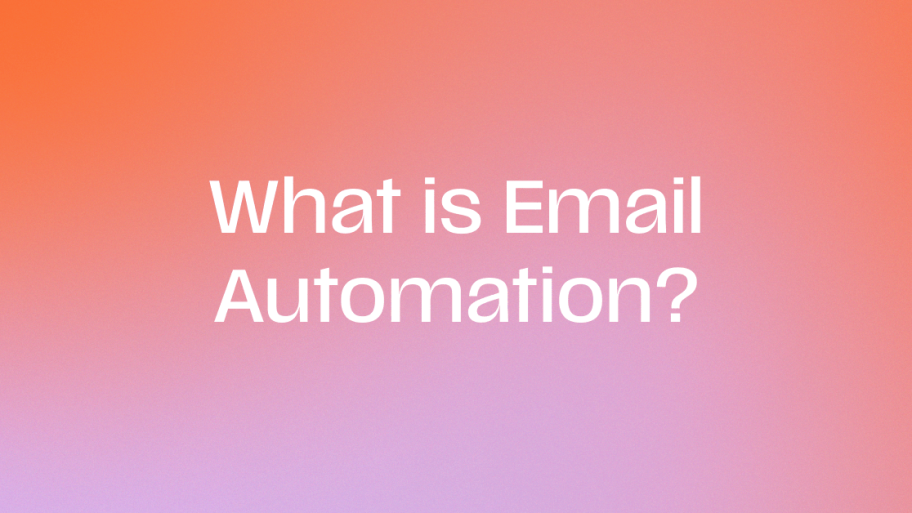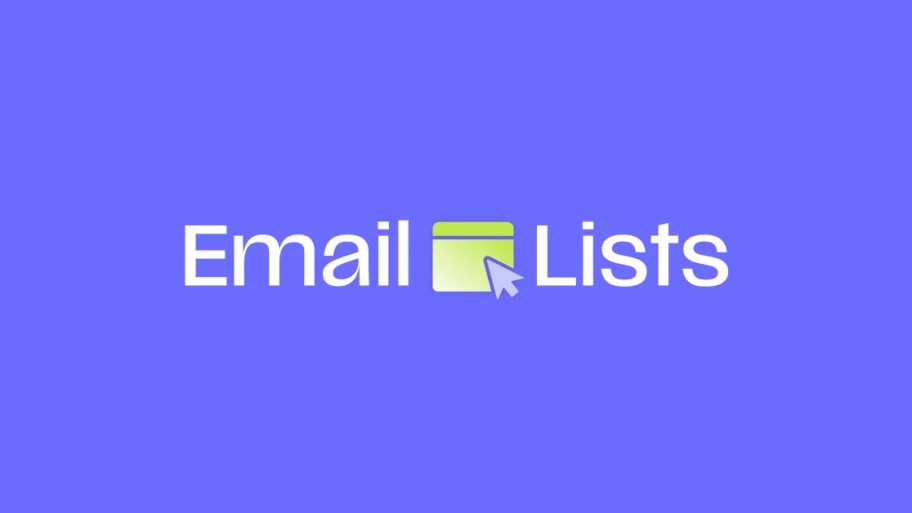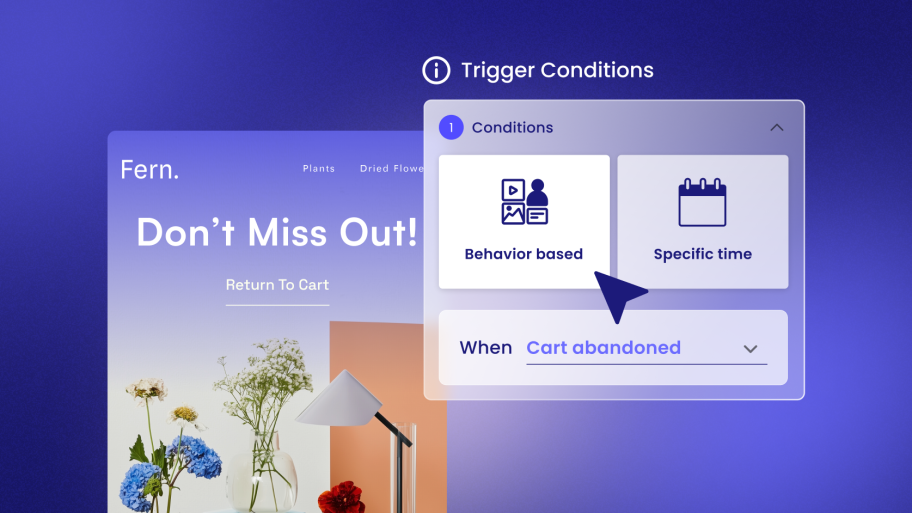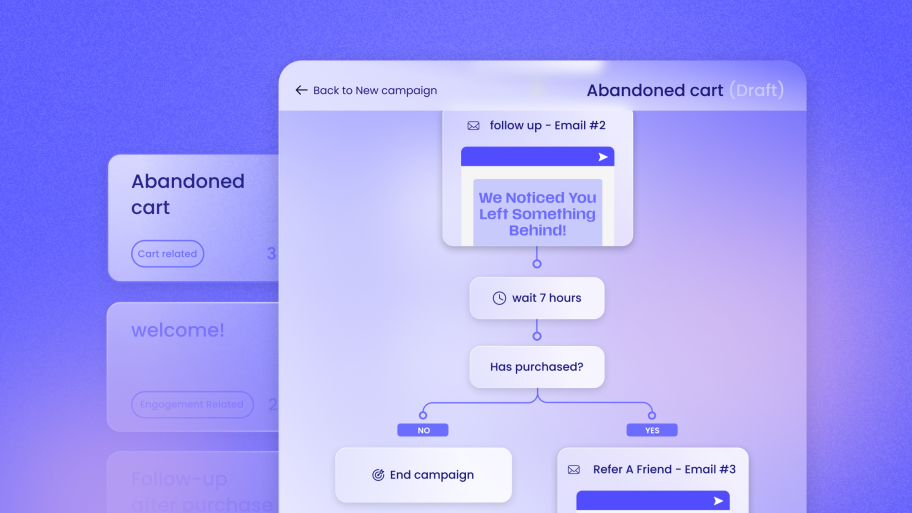An effective email format isn’t just about looking good; it’s a strategic tool for ensuring clarity, projecting professionalism, and driving action. This comprehensive guide explores everything you need to know to master the art of email formatting for any situation, turning your emails from simple messages into powerful assets.
What Is an Email Format?
An email format is the structure, layout, and stylistic organization of your email message. It includes the deliberate arrangement of key components like the subject line, sender information, greeting, body content, call-to-action, closing, and signature. Think of it as the blueprint for your communication, dictating how every element works together to achieve a specific goal.
A standard format creates a predictable and easy-to-navigate experience for the reader. It establishes a visual hierarchy that guides the eye, making the information digestible and scannable for busy readers. A consistent format across all your communications also builds trust and reinforces your brand identity over time.
Plain Text vs. HTML Emails
At a technical level, emails come in two primary formats:
- Plain Text: These are the simplest form of email, containing only text without any formatting options like different fonts, colors, images, or embedded links. They are universally supported by all email clients and are often favored for direct, personal communication because they feel authentic and are guaranteed to render correctly.
- HTML (HyperText Markup Language): This is the format that allows for rich visual content. HTML emails can include logos, images, custom fonts, colors, buttons, and complex layouts. This is the standard for marketing, ecommerce, and newsletters where branding and visual appeal are paramount.
Modern email marketing platforms, including Send by Elementor, use HTML editors to allow creators to build visually engaging emails without needing to write code, while also automatically generating a plain-text version for compatibility.
Why Proper Email Format Is Crucial
In a world where the average professional receives over 120 emails a day and the ROI on email marketing can be as high as $42 for every $1 spent, standing out is not just an advantage—it’s an economic necessity. Proper formatting is your first and best tool for capturing and holding your audience’s attention.
Here’s why it matters so much:
- Improves Readability and Comprehension: A well-structured email reduces cognitive load. Short paragraphs, clear headings, and bullet points help readers scan the content and quickly grasp the main points. Research using eye-tracking studies shows that people often read emails in an “F-pattern,” scanning down the left side and across the top. Good formatting caters to this natural behavior.
- Boosts Professionalism and Credibility: A sloppy, disorganized email reflects poorly on you and your brand, suggesting a lack of attention to detail. Conversely, a clean, consistent format signals professionalism and builds trust with your recipients, whether they are potential clients, investors, customers, or colleagues.
- Increases Engagement and Conversions: The ultimate goal of most emails is to get the recipient to do something—click a link, reply, or make a purchase. A logical format guides the reader seamlessly from the subject line to the call-to-action (CTA). A well-placed and visually distinct CTA button is far more effective than a simple text link buried in a paragraph, directly impacting your click-through and conversion rates.
- Ensures Mobile-Friendliness: With over 85% of users checking email on their smartphones, a mobile-responsive format is non-negotiable. Proper formatting, especially a single-column layout, ensures your email looks great and functions perfectly on any screen size, preventing the frustrating pinching and zooming that causes users to abandon your message.
- Reinforces Brand Identity: Consistent use of your brand’s colors, fonts, and logo in your email format helps build powerful brand recognition. When subscribers see your emails, they should instantly know who it’s from, strengthening your brand’s presence in their minds and building a cohesive cross-channel experience.
How Formatting Impacts Email Deliverability
Email deliverability—the ability of your email to reach the subscriber’s inbox rather than the spam folder—is directly influenced by your formatting choices. Internet Service Providers (ISPs) and email clients like Gmail and Outlook use complex algorithms to screen for spam. Here’s how your format plays a role:
- Image-to-Text Ratio: Emails that are one large image with very little text are a major red flag for spam filters. Spammers often use this tactic to hide trigger words. Aim for a healthy balance, typically around 80% text to 20% images.
- Clean HTML Code: Messy, broken, or non-standard HTML code can be a spam trigger. Using a reputable email creation tool like Send by Elementor ensures your emails are built with clean, compliant code that inbox providers trust.
- Mobile Responsiveness: Since mailbox providers know that a majority of users read emails on mobile, they prioritize a good user experience. Emails that are not mobile-responsive may be penalized, hurting their chances of reaching the inbox.
- Accessible Unsubscribe Link: As mentioned, a clear and functional unsubscribe link is not just a legal requirement; it’s a sign of a legitimate sender. Spam filters check for its presence.
Components of a Standard Email Format
Every effective email, regardless of its purpose, contains a few core components. Mastering these elements is the first step toward creating powerful and professional communications.
1. “From” Name and Address
This is the first thing your recipients see, and it heavily influences whether they open your email. The “From” name should be instantly recognizable and trustworthy.
- For individuals: Use your full name (e.g., “John Smith”).
- For businesses: Use a combination of a person’s name and the company name (e.g., “Jane at Elementor”) or just the company name (“Send by Elementor”). The personalized approach often feels more human and can improve open rates.
- Email Address: Always use a professional email address associated with your custom domain (e.g.,
[email protected]), not a generic one from Gmail or Yahoo. This is a fundamental mark of a legitimate business.
2. Subject Line
The subject line is your email’s headline. It has one job: to convince the recipient to open the message.
- Be Clear and Concise: Keep it under 50 characters to ensure it’s fully visible on mobile devices.
- Create Urgency or Curiosity: Phrases like “24-hour offer,” “Your seat is waiting,” or “A question about your goals” can boost open rates.
- Personalize It: Including the recipient’s name or location can increase opens by over 20%.
- Use Emojis Wisely: Emojis can help your subject line stand out but use them sparingly and ensure they are relevant to your brand and message. ☀️ 🎁 🎉
- A/B Test: Don’t guess what works. Regularly test different subject lines to see what resonates most with your audience. Test questions vs. statements, length, and the inclusion of emojis.
3. Preheader Text
The preheader is the short snippet of text that appears after the subject line in most email clients. It’s a critical, yet often overlooked, element that acts as a “second subject line.”
- Supplement the Subject Line: Use it to provide additional context or a compelling reason to open the email. If your subject is “Our Summer Sale is On!”, your preheader could be “Save up to 50% on new arrivals.”
- Keep it Short: Aim for 40-100 characters for maximum impact.
- Avoid Repetition: Never just repeat the subject line. If you don’t set a preheader, email clients will pull the first line of text from your email, which might be unhelpful text like “View this email in your browser.”
4. Greeting
The greeting sets the tone for your entire message.
- Personalize It: Always use the recipient’s name. “Hi Sarah,” is far more effective than the impersonal “Dear Customer.”
- Match the Formality: “Hi” or “Hello” works for most modern business situations. Use the more formal “Dear Mr./Ms. [Last Name]” for formal correspondence, legal matters, or when addressing senior executives you don’t know.
5. Email Body
This is the core of your message. The key to a great email body is scannability and clarity.
- Opening: Start by stating the purpose of your email directly. Get to the point in the first sentence or two.
- Short Paragraphs: Keep paragraphs short—no more than 3-4 sentences each. This makes the text less intimidating and easier to read on mobile.
- White Space: Use ample white space (margins and padding) to break up text and give your content room to breathe.
- Visual Formatting: Use bolding, italics, and bullet points to highlight key information and guide the reader’s eye.
- The Call-to-Action (CTA): Every email should have a clear goal. Make your CTA obvious, whether it’s a button or a linked piece of text. Use action-oriented language like “Shop Now,” “Learn More,” or “Schedule a Call.”
6. Closing
Like the greeting, the closing should match the tone of your email and your relationship with the recipient.
- Professional: “Sincerely,” “Best regards,” or “All the best.”
- Less Formal: “Cheers,” “Thanks,” or “Talk soon.”
7. Signature
Your email signature is your digital business card. It should be professional, provide essential information, and remain consistent.
- Include the Basics: Your Name, Title, Company, and Website.
- Add Contact Information: A phone number or link to your LinkedIn profile is helpful.
- Keep it Clean: Avoid cluttering it with too many links, images, or inspirational quotes. A simple, clean design works best.
- Legal Disclaimers: In some industries (finance, legal, healthcare), a confidentiality disclaimer is required.
8. Unsubscribe Link and Footer
For all marketing and promotional emails, an unsubscribe link is legally required by regulations like CAN-SPAM and GDPR.
- Make it Clear: Don’t hide it in a tiny font or with deceptive colors.
- One-Click Process: The process to unsubscribe should be simple.
- Include Physical Address: CAN-SPAM also requires you to include a valid physical postal address in your email’s footer.
Email Format for Ecommerce Purposes
For ecommerce businesses, email isn’t just a communication tool—it’s a powerful sales engine. The right format can drive traffic, recover abandoned carts, and turn one-time buyers into lifelong fans. While the standard components still apply, the focus shifts toward visual appeal and clear, conversion-focused messaging.
The Anatomy of a High-Converting Ecommerce Email
- Header: Contains your logo, providing immediate brand recognition. It may also include a link to your website’s main navigation.
- Hero Section: A large, compelling image or graphic with a headline that grabs attention and a clear CTA. This is your prime real estate.
- Body Copy: Brief, persuasive text that explains the value of the offer.
- Product Grid: A clean layout showcasing specific products, each with a quality image, name, price, and its own CTA button.
- Social Proof (Optional but Recommended): A customer testimonial, star ratings, or logos of media outlets you’ve been featured in can significantly boost trust.
- Footer: Includes your company address, social media links, and the all-important unsubscribe link.
Lifecycle Email Formatting
The format of your ecommerce emails should adapt to where the customer is in their journey.
- Post-Purchase Format: The goal here is reassurance and engagement. The format should be clean and informational. Lead with order details, provide tracking information clearly, and then suggest related products or ask for a review as a secondary CTA.
- Loyalty/VIP Format: These emails should feel exclusive. Use a more sophisticated design, perhaps with darker colors or metallic accents. Address the subscriber as a VIP member and format the email to highlight their special status, exclusive access, or unique rewards.
Design Considerations for Ecommerce Emails
Creating a high-converting ecommerce email involves more than just dropping in product photos. The design must be strategic and user-centric.
1. Mobile-First Design
Always design for the smallest screen first.
- Single-Column Layout: This is the safest and most effective layout for mobile. It ensures content stacks vertically and is easy to scroll through.
- Large, Tappable Buttons: Make sure your CTA buttons have enough padding and are large enough for a thumb to tap without accidentally hitting another link. A minimum size of 44×44 pixels is a good rule of thumb.
- Readable Fonts: Use a clean, simple web font (like Arial, Helvetica, or Lato) at a size of at least 16px for body text. Headings should be larger.
2. Brand Consistency
Your emails should be an extension of your website and overall brand experience.
- Logo Placement: Place your logo prominently at the top of the email.
- Color Palette: Stick to your brand’s color scheme. Use your primary brand color for CTAs to make them stand out.
- Typography: Use the same fonts that are on your website to create a cohesive experience.
3. Visual Hierarchy
Guide the reader’s eye through the email to the most important information.
- The Inverted Pyramid: A classic design principle that works perfectly for email. Place your most important message and CTA at the top (the wide part of the pyramid), followed by supporting details, and finally, secondary information in the footer (the narrow point).
- The F-Pattern: As mentioned, users often scan in an F-shape. Place your most critical information along the top and left side of your email. This means your logo, key headline, and initial sentences are vital.
- Use of Space: Don’t be afraid of white space. It reduces cognitive load and helps key elements, like your products and CTAs, stand out.
4. The Psychology of Color
Colors evoke emotions and can influence purchasing decisions.
- Red/Orange: Create a sense of urgency. Great for clearance sales and limited-time offers.
- Blue: Conveys trust and security. Often used by financial institutions and tech companies.
- Green: Associated with health, nature, and wealth. Works well for eco-friendly brands or to signal a “go-ahead” on a CTA.
- Black: Signifies luxury and sophistication. Used by high-end fashion and tech brands.
5. Accessibility (A11y)
Designing for accessibility ensures that all subscribers, including those with disabilities, can engage with your content.
- Alt Text for Images: Always add descriptive alt text to your images. This is read aloud by screen readers and is displayed if images are blocked.
- High Contrast Ratios: Ensure there is sufficient contrast between your text and background colors.
- Clear Link Text: Instead of “Click Here,” use descriptive text that explains where the link goes, such as “Shop our Summer Collection.”
- Set the Language: Declaring the language in your email’s HTML (
<html lang="en">) helps screen readers pronounce the content correctly. Reputable builders do this automatically.
Advanced Email Formatting Tips
Once you’ve mastered the basics, you can explore more advanced techniques.
1. Interactive Elements
Interactive emails can significantly boost engagement by allowing users to take action within the email itself.
- Image Carousels: Allow users to scroll through multiple product images.
- Accordions: Use collapsible sections to pack more information (like FAQs) into a smaller space.
- Surveys and Polls: Embed simple forms to gather feedback directly in the email.
- Note: Support for interactivity varies across email clients. Always test thoroughly and provide a fallback for clients that don’t support these features.
2. Dynamic Content and Personalization
Go beyond just using the recipient’s first name.
- Personalized Product Recommendations: Use data on past purchases and browsing behavior to populate emails with products the specific user is most likely to be interested in.
- Geotargeting: Show different content based on the user’s location, such as promoting a local store event or showing weather-appropriate products.
- Behavior-Triggered Content: Change email content based on how a user has interacted with your brand. For example, show a “Welcome Back” message to a customer who hasn’t purchased in a while.
3. Dark Mode Optimization
Many users now prefer “dark mode.” If your email isn’t optimized for it, it can become unreadable.
- Use Transparent Images: Use PNGs with transparent backgrounds for logos and icons.
- Test Your Colors: Some colors can invert in unexpected ways. Test how your emails render in dark mode in popular clients like Gmail and Apple Mail.
- Outline Your Text: For black text on a white background image, consider adding a thin white outline to the text to ensure it remains visible if the background color inverts.
4. AMP for Email
This technology allows you to create app-like experiences directly within an email. Users can browse product catalogs, RSVP to events, or fill out forms without ever leaving their inbox. While it requires more technical expertise, it can create a truly frictionless user experience.
Common Email Formatting Mistakes to Avoid
Knowing what to do is important, but knowing what not to do can save you from costly mistakes that hurt engagement and deliverability.
1. Overloading with Too Many CTAs
The Problem: When you give readers too many choices, they often make none. An email with five different buttons asking the user to “Shop Now,” “Read the Blog,” “Follow Us,” and “See Our Story” creates decision paralysis. The Fix: Stick to one primary CTA. Your entire email—the headline, copy, and images—should support this single goal. You can have secondary links in your footer, but the main body should focus on one action.
2. Ignoring the Plain-Text Version
The Problem: Some users or email clients may block HTML emails for security reasons, or they may simply prefer text-only versions. If you don’t provide a formatted plain-text alternative, your message can appear as a jumbled mess of code. The Fix: Use an email service provider that automatically generates a clean, readable plain-text version of your HTML email. Review it before sending to ensure the links work and the copy makes sense without visual context.
3. Using Unprofessional or Custom Fonts
The Problem: While that fancy script font might look great on your website, it probably won’t render in your recipient’s inbox. Email clients have limited support for custom fonts. If a font isn’t supported, the client will default to a standard font, which can break your design and look unprofessional. The Fix: Stick to web-safe fonts like Arial, Helvetica, Georgia, and Times New Roman. These are universally supported and will ensure your email looks consistent for everyone.
4. Forgetting Image Compression
The Problem: High-resolution images are large files. Emails filled with them will load slowly, especially on mobile devices with poor connections. Many users will simply delete a slow-loading email out of frustration. The Fix: Always compress your images before uploading them to your email. Use tools to reduce the file size without significantly sacrificing quality. This ensures a fast, smooth experience for your readers.
Testing and Analyzing Your Email Format
Creating a great format isn’t a one-time task. It requires continuous testing and refinement.
A/B Testing Your Format
A/B testing involves sending two variations of an email to different segments of your audience to see which one performs better. You can test almost any element of your format:
- CTA Button: Test button color, size, and text (e.g., “Shop Now” vs. “Get 20% Off”).
- Layout: Test a single-column layout against a multi-column grid.
- Imagery: Test a lifestyle photo against a clean product shot.
- Personalization: Test an email with personalized product recommendations against one with generic best-sellers.
Key Metrics to Track
- Open Rate: Primarily influenced by your subject line and “from” name.
- Click-Through Rate (CTR): The best indicator of your format’s effectiveness. A high CTR means your layout, visuals, and CTAs are successfully compelling users to act.
- Conversion Rate: Measures how many users completed the desired action (e.g., made a purchase) after clicking.
- Unsubscribe Rate: A sudden spike could indicate a problem with your content or formatting.
Tips, Best Practices, and More Examples
Here are formats for even more common email types.
1. Professional Email Format
Focus: Clarity, professionalism, and efficiency. Example:
Subject: Meeting Follow-Up: Project Alpha Next Steps
Hi David,
It was great connecting with you and the team earlier today. As discussed, I’ve attached the project proposal for your review. It outlines the timeline, deliverables, and budget we talked about.
Please let me know if you have any questions or feedback by EOD Friday.
Best regards,
Jane Doe | Senior Project Manager | Innovate Corp. | (555) 123-4567
2. Welcome Email Format
Focus: Make a great first impression and set expectations. Example:
Subject: Welcome to the Club! Here’s 10% Off Your First Order
Hi [First Name],
Welcome to the [Your Brand] family! We’re all about [mention your brand’s mission]. As a thank you for joining us, here’s 10% off your first purchase. Use code: WELCOME10
[CTA Button: Shop New Arrivals]
Best, The Team at [Your Brand]
3. Promotional Email Format
Focus: Drive sales with strong visuals and a clear offer. Example:
Subject: ☀️ Our Summer Sale Starts Now! Up to 40% Off
[Large, vibrant hero image of summer products]
THE SUMMER SALE IS HERE Get ready for sunshine with up to 40% off our most-loved summer styles.
[CTA Button: Shop the Sale]
4. Abandoned Cart Email Format
Focus: Recover lost sales by reminding customers what they left behind. Example:
Subject: Did you forget something, [First Name]?
Still thinking it over? It looks like you left some great items in your cart. We’re holding them for you!
[Product Name] – [Price]
[CTA Button: Return to Your Cart]
5. Re-Engagement Email Format
Focus: Win back inactive subscribers. Example:
Subject: Is this goodbye? 😢 We miss you!
It’s been a while! We’d love to have you back. Here’s a special 20% discount on your next order to welcome you back. Use Code: COMEBACK20
[CTA Button: Shop Now]
6. Feedback Request Email Format
Focus: Politely ask for a review or survey response to gather valuable customer insights. Example:
Subject: How did we do, [First Name]?
Hi [First Name],
Thanks for your recent purchase! We hope you’re loving your [Product Name]. Would you have a moment to share your experience? Your feedback helps us improve and helps other customers make great choices.
[CTA Button: Leave a Review]
It only takes a minute, and we’d really appreciate it.
Thanks, The [Your Brand] Team
7. Event Invitation Email Format
Focus: Generate excitement and drive registrations for a webinar, workshop, or event. Example:
Subject: You’re Invited! Join Our Live Workshop on [Topic]
[Compelling Header Image for the Event]
SAVE YOUR SPOT
Hi [First Name],
Get ready to level up your skills! We’re hosting a free, live workshop on [Topic of Workshop] and we’d love for you to be there.
In this session, you’ll learn:
- Key takeaway #1
- Key takeaway #2
- Key takeaway #3
Date: [Date] Time: [Time]
[CTA Button: Register for Free]
Can’t make it live? Register anyway and we’ll send you the recording.
Cheers, The [Your Brand] Team
How to Format an Email with Send by Elementor: Putting Theory into Practice
Knowing the principles of good email format is one thing. Implementing them efficiently is another. This is where a tool built for creators becomes invaluable. Send by Elementor is a communication toolkit designed to integrate seamlessly into WordPress, simplifying the entire process of creating, formatting, and automating beautiful, effective emails. It provides a practical solution to the formatting challenges discussed throughout this guide.
Step-by-Step: Crafting the Perfect Format
- Choose a Starting Point to Ensure Consistency: Send by Elementor offers professionally designed templates. Starting with a template ensures your format is already mobile-responsive and follows a logical structure, helping you avoid common layout mistakes from the start.
- Use the Drag-and-Drop Editor for Visual Hierarchy: The intuitive, visual editor is where you build your email’s structure. Drag in columns and content blocks for text, images, and buttons to implement the “Inverted Pyramid” structure and avoid CTA overload by focusing the layout on a single goal.
- Customize Your Branding to Reinforce Identity: Set global styles for colors, fonts, and button designs that match your brand. This directly addresses the need for brand consistency and prevents the use of unprofessional, non-web-safe fonts.
- Add Your Content with Readability in Mind: Click into any text block to write and format your copy. Use the built-in tools to bold text, create bulleted lists, and adjust line height to increase white space, making your content highly scannable. The platform automatically handles image compression and generates clean HTML, improving deliverability.
- Create Compelling, Tappable CTAs: Drag in a button block. You can easily customize the text, color, size, and link. Use your brand’s primary color to make it pop and add padding to ensure it’s at least 44x44px.
- Preview and Test Across Devices: Before sending, use the built-in preview tool to see exactly how your email will look on both desktop and mobile. This is your final check to ensure your formatting holds up across different screen sizes and in dark mode.
By using a tool like Send by Elementor, you move from thinking about proper email format to executing it flawlessly and efficiently. It handles the technical complexities, allowing you to focus on what matters most: crafting a compelling message that connects with your audience and grows your business.
Conclusion
Mastering email format is not about following a rigid set of rules; it’s about understanding the principles of effective communication in a digital context. It’s about respecting your reader’s time, guiding their attention, and making it easy for them to understand and act on your message. From the first impression of the subject line to the final branding in the signature, every element of your email’s format works together to build trust, drive engagement, and ultimately, achieve your goals.
The digital landscape will continue to evolve, but the need for clear, professional, and user-centric communication will remain constant. By applying the strategies in this guide and leveraging powerful tools to implement them, you can ensure your emails don’t just get delivered—they get results.
